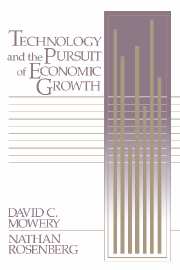Book contents
- Frontmatter
- Contents
- Preface
- Part I Introduction
- Part II The development of the institutional structure, 1860–1940
- Part III The development of the postwar system, 1940–1987
- 6 Postwar federal investment in research and development
- 7 The U.S. commercial aircraft industry
- Part IV New environment, new research organizations
- Bibliography
- Index
6 - Postwar federal investment in research and development
Published online by Cambridge University Press: 22 March 2010
- Frontmatter
- Contents
- Preface
- Part I Introduction
- Part II The development of the institutional structure, 1860–1940
- Part III The development of the postwar system, 1940–1987
- 6 Postwar federal investment in research and development
- 7 The U.S. commercial aircraft industry
- Part IV New environment, new research organizations
- Bibliography
- Index
Summary
The Second World War transformed the U.S. R&D system. Wartime led to a dramatic increase in government involvement as a supporter of industrial and academic research – in some contrast to other nations, however, responsibility for the performance of much of this R&D remained with these nongovernmental institutions. World War II also transformed the global technological and competitive environment within which U.S. firms operated. The U.S. emerged from wartime as an unchallenged leader in a much broader range of technologies than was true at any point before 1940. Moreover, the demands of reconstruction were to prolong the period of U.S. technological, as well as economic, supremacy. Because the central point of contrast between the prewar and postwar research systems is this upsurge in federal government involvement in the national R&D system, in this chapter we devote considerable attention to the contours of federal R&D support in basic, commercial, and military research.
During the past forty-five years, the federal government has assumed major responsibilities for decision making, for finance, and even for the use of the “output” of scientific research. Since the Second World War the U.S. research system has been transformed from one in which the federal government was a minor participant to one in which it has become a major purchaser of R&D, albeit without at the same time becoming a primary performer of R&D. Rather than being performed mainly in government laboratories, federally funded R&D is largely carried out by private industry; the university community is the main performer of the basic research component.
- Type
- Chapter
- Information
- Technology and the Pursuit of Economic Growth , pp. 123 - 168Publisher: Cambridge University PressPrint publication year: 1989



